Standards and the Green Economy
The SSI Review: Standards and the Green Economy provides a bird’s-eye view of market and performance trends across 16 of the most prevalent standards initiatives operating across 10 different commodity sectors.
The report represents one small effort toward strengthening our understanding of how voluntary sustainability standards are developing over time, both in terms of the systems characteristics they deploy and the market impacts that they have.
This report was published in 2014 with data inclusive from 2008 to 2012.
41%
The average annual growth rate of standard-compliant production across all sectors reviewed was a stunning 41 per cent, significantly outpacing the annual average growth of 2 per cent in the corresponding conventional commodity markets.
Highlights
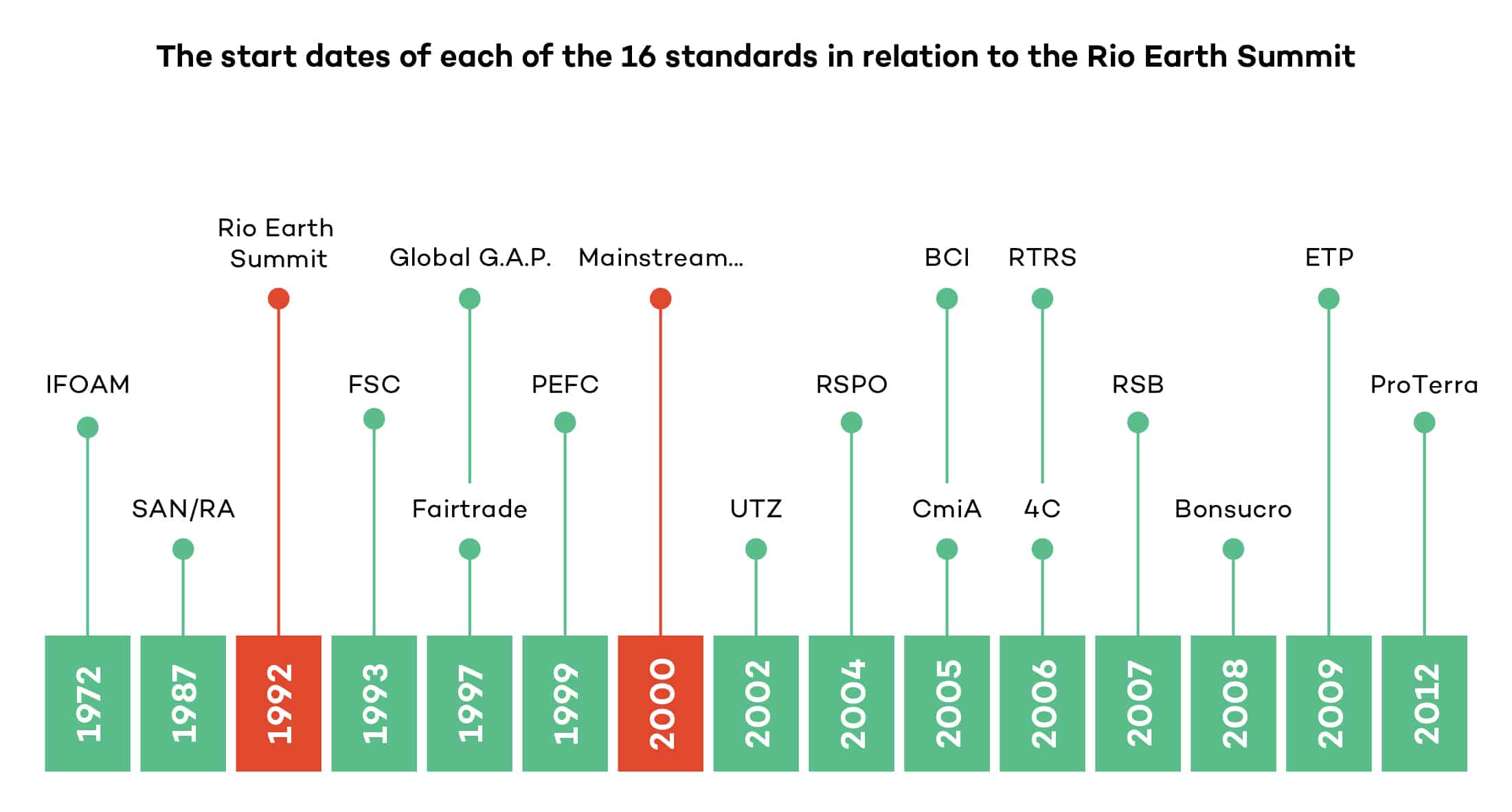)
The start dates of each of the 16 standards in relation to the Rio Earth Summit
This visual representation details the timeline of the 16 standards covered in this report. The year 2000 roughly marks the beginning of the trend toward the development of initiatives explicitly targeting global mainstream markets.
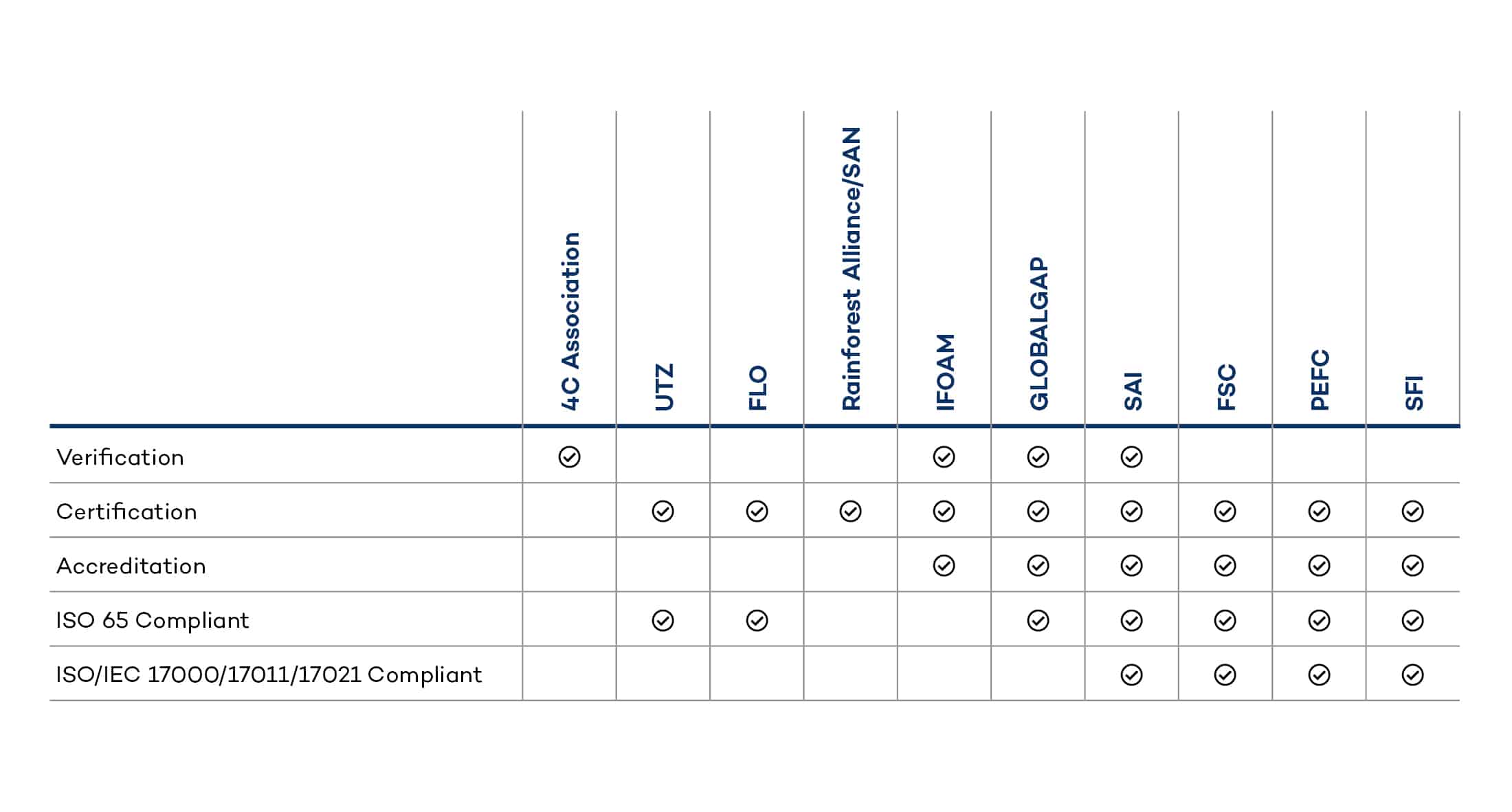)
Conformity assessment indicators
Certification remained the predominant form of conformity assessment within the initiatives reviewed in this report. A conformity assessment indicator determines whether a commodity meets a specific criteria set within a standard to contribute to social, environmental or economic sustainability.
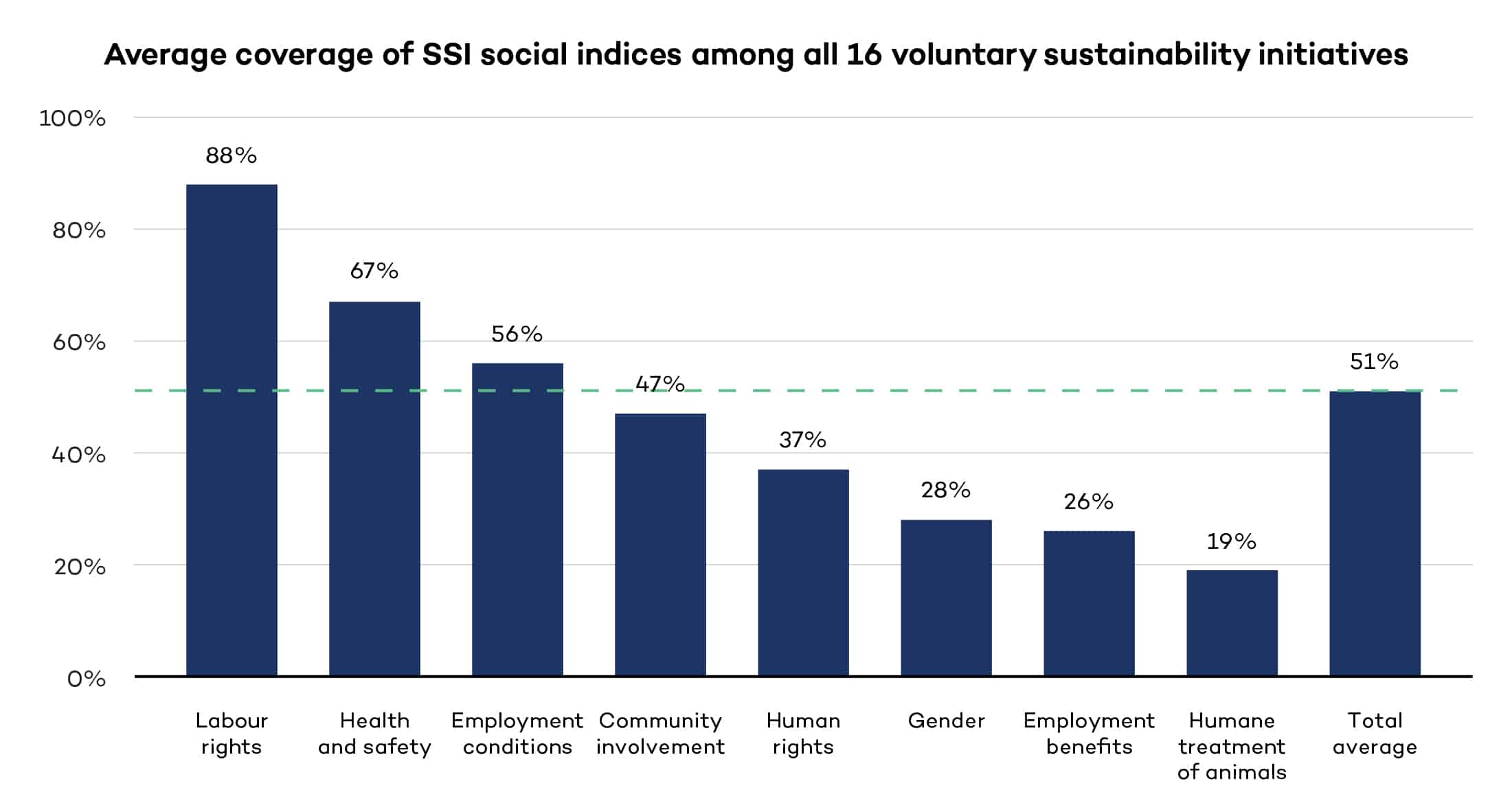)
Contributions to social sustainability in communities, households, and workplaces
We review how the 16 standards covered in this report contribute to key social issues, from labour rights to gender equality to animal treatment. The results are shown in aggregate from the highest degree of coverage to the lowest. These indicators place great emphasis on UN and International Labour Organization human and labour rights documents.
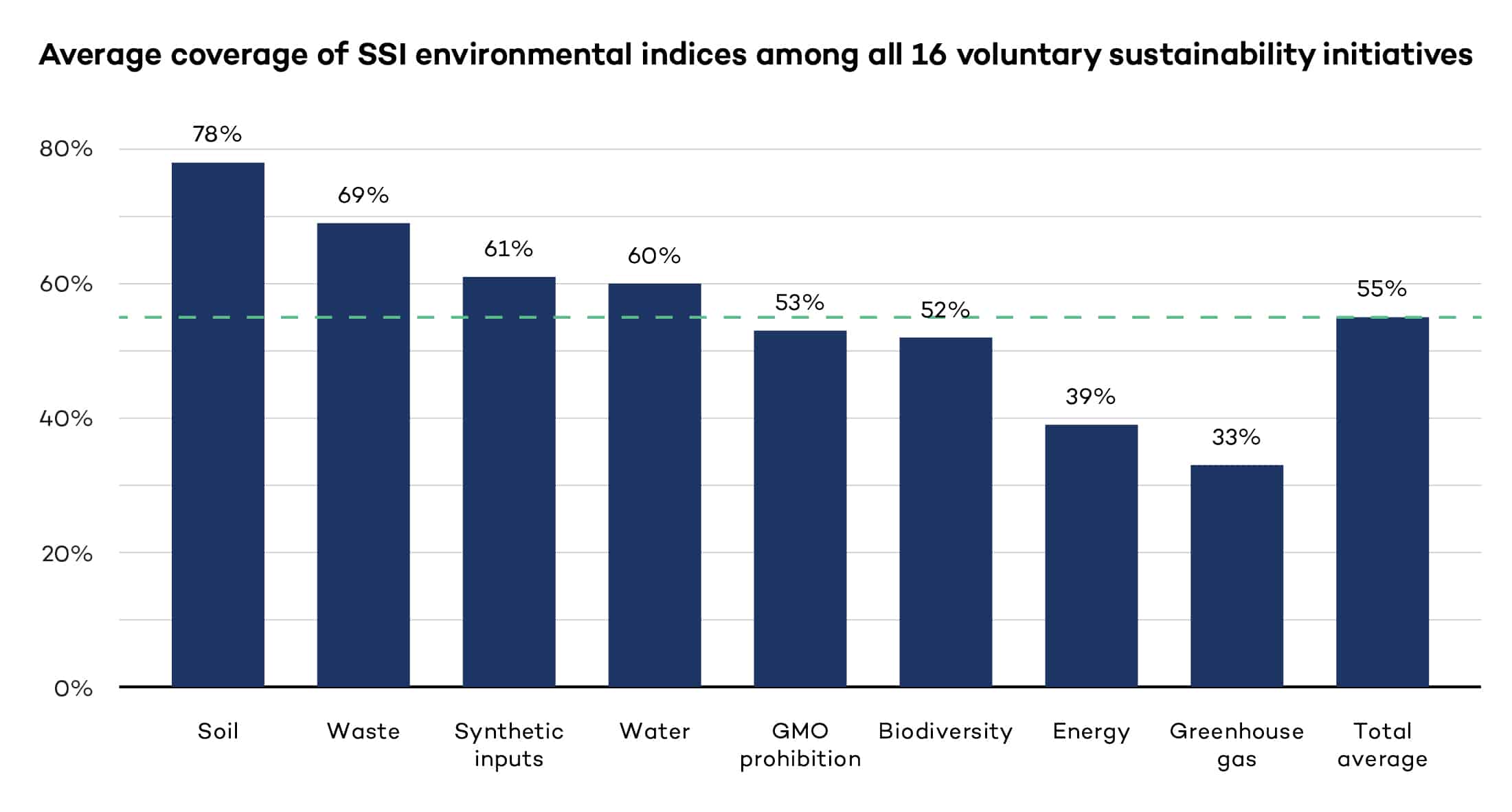)
VSSs contributing to sustainable environmental practices
Our report details how over half the initiatives reviewed have an average environmental coverage of 50 per cent or more. However, initiatives created in 2000 or later had fewer environmental sustainability criteria than the more mature standards.
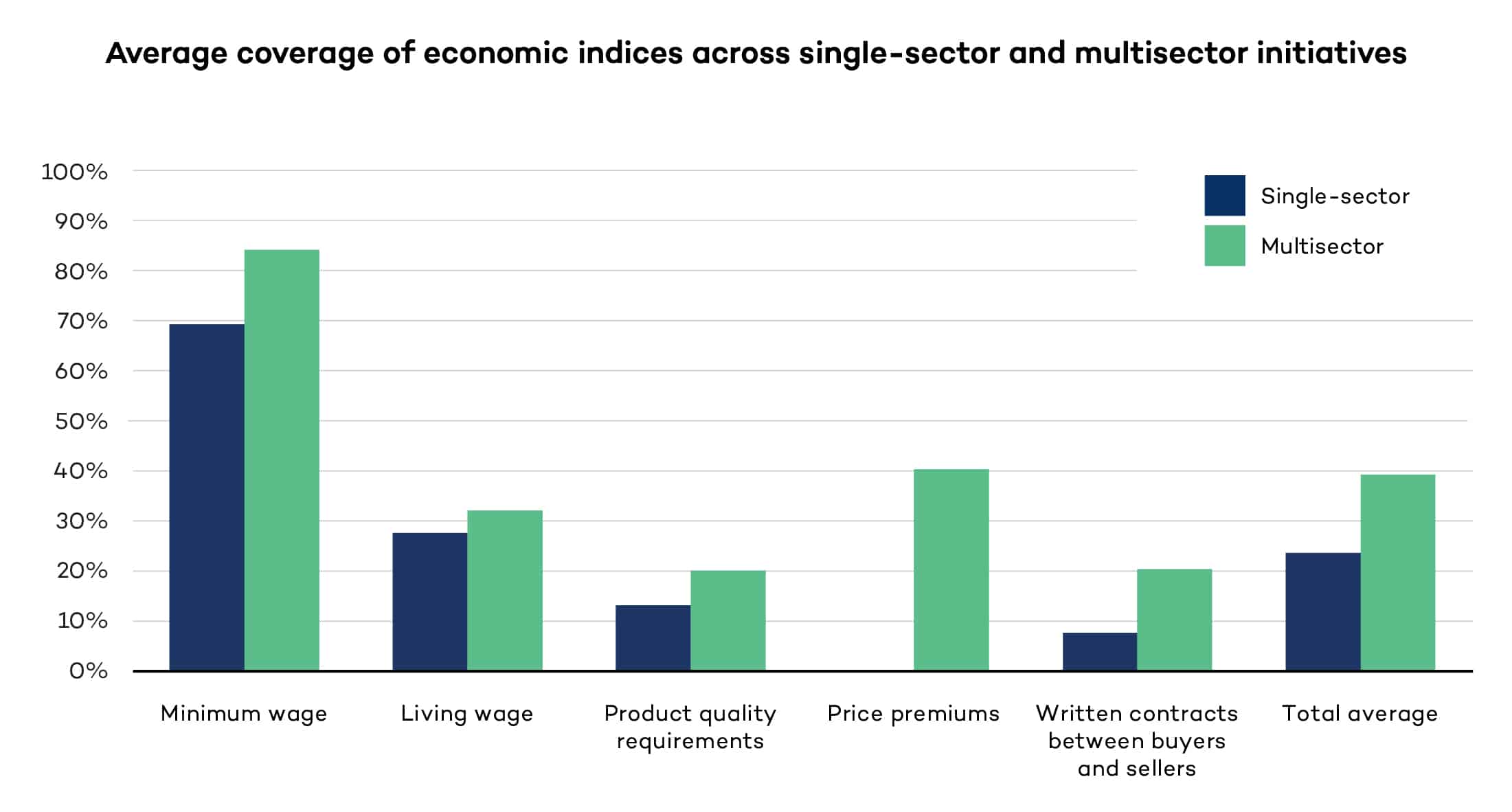)
Providing sustainable livelihoods across the supply chain
Multisector initiatives show more stringent requirements across economic indices, though these indicators are sparse among most initiatives in this report, with the sole exception of the minimum wage index.

